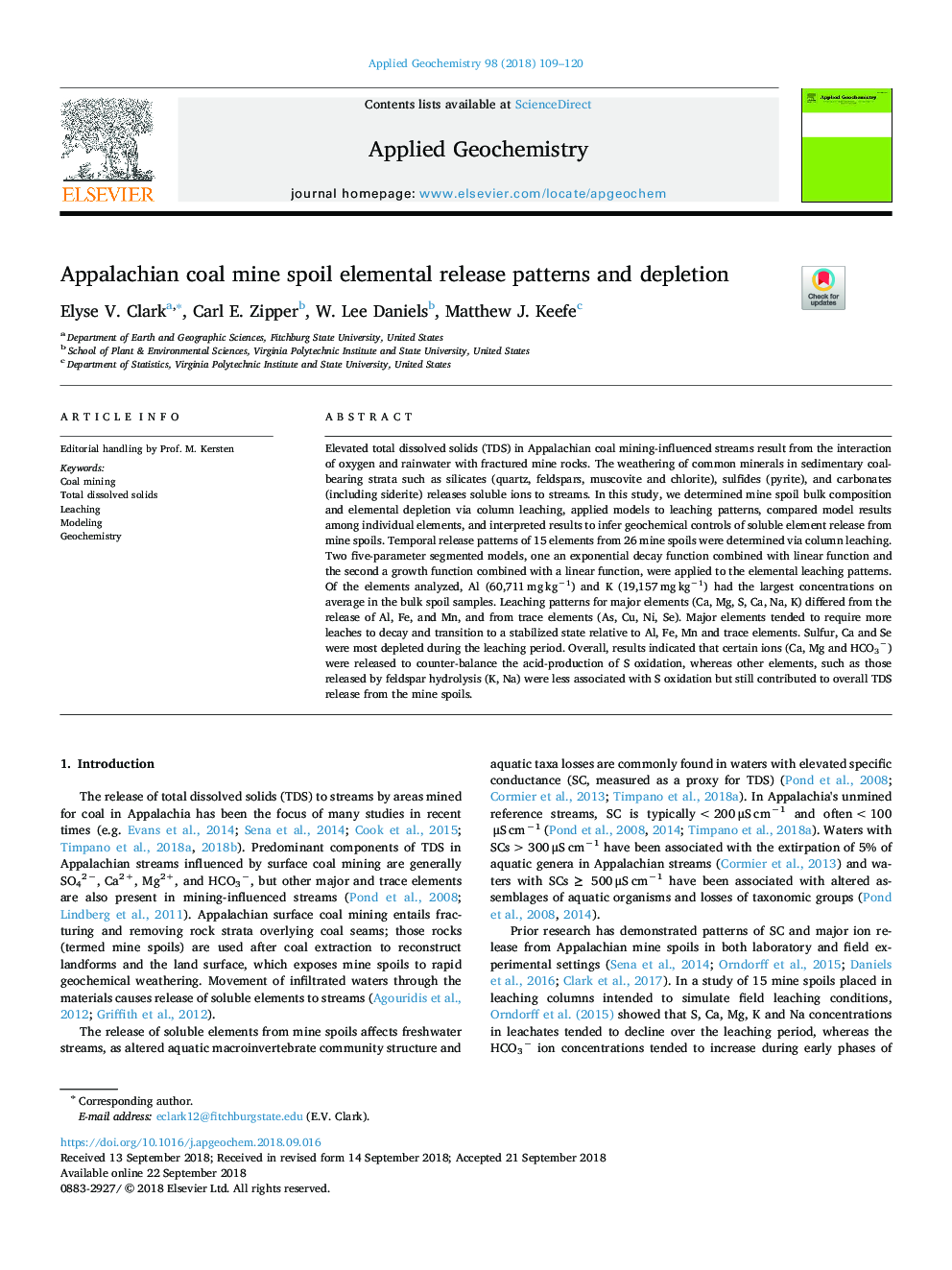| Article ID | Journal | Published Year | Pages | File Type |
|---|---|---|---|---|
| 10223575 | Applied Geochemistry | 2018 | 12 Pages |
Abstract
Elevated total dissolved solids (TDS) in Appalachian coal mining-influenced streams result from the interaction of oxygen and rainwater with fractured mine rocks. The weathering of common minerals in sedimentary coal-bearing strata such as silicates (quartz, feldspars, muscovite and chlorite), sulfides (pyrite), and carbonates (including siderite) releases soluble ions to streams. In this study, we determined mine spoil bulk composition and elemental depletion via column leaching, applied models to leaching patterns, compared model results among individual elements, and interpreted results to infer geochemical controls of soluble element release from mine spoils. Temporal release patterns of 15 elements from 26 mine spoils were determined via column leaching. Two five-parameter segmented models, one an exponential decay function combined with linear function and the second a growth function combined with a linear function, were applied to the elemental leaching patterns. Of the elements analyzed, Al (60,711â¯mgâ¯kgâ1) and K (19,157â¯mgâ¯kgâ1) had the largest concentrations on average in the bulk spoil samples. Leaching patterns for major elements (Ca, Mg, S, Ca, Na, K) differed from the release of Al, Fe, and Mn, and from trace elements (As, Cu, Ni, Se). Major elements tended to require more leaches to decay and transition to a stabilized state relative to Al, Fe, Mn and trace elements. Sulfur, Ca and Se were most depleted during the leaching period. Overall, results indicated that certain ions (Ca, Mg and HCO3â) were released to counter-balance the acid-production of S oxidation, whereas other elements, such as those released by feldspar hydrolysis (K, Na) were less associated with S oxidation but still contributed to overall TDS release from the mine spoils.
Related Topics
Physical Sciences and Engineering
Earth and Planetary Sciences
Geochemistry and Petrology
Authors
Elyse V. Clark, Carl E. Zipper, W. Lee Daniels, Matthew J. Keefe,
